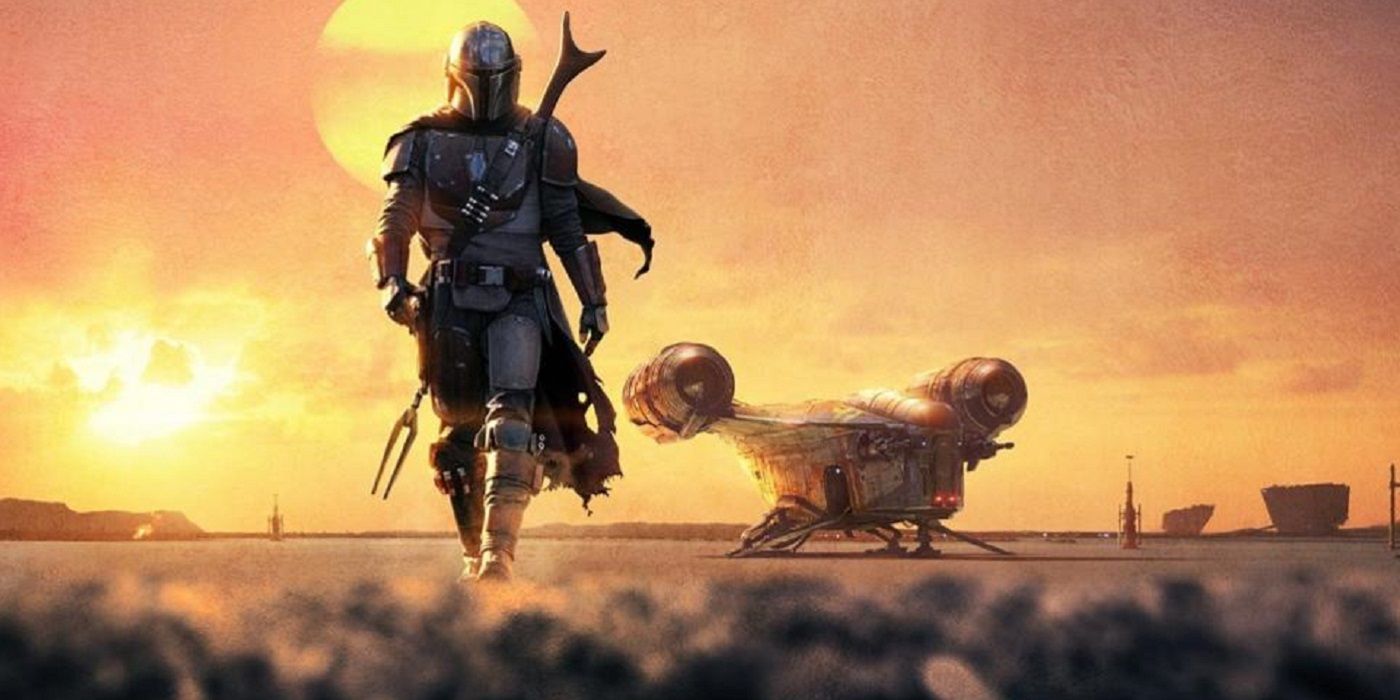
The season 2 premiere of Disney Plus' The Mandalorian featured a climactic confrontation with a giant beast that united the titular bounty hunter and the Tusken Raiders. Now, the Star Wars series' creator, Jon Favreau, has discussed the making of the pivotal scene.
The season two premiere, titled "Chapter 9: The Marshal", follows Mandalorian Din Djarin as he attempts to settle a dispute between a small town on the planet Tatooine and a tribe of Tusken Raiders, a.k.a. the Sand People. In the episode, which was directed by Favreau, the Mandalorian manages to convince the townsfolk to team up with the Tusken Raiders to defeat a common enemy: a giant Krayt Dragon that threatens to destroy their way of life.
RELATED: Star Wars Ahsoka Spin-Off Rumored To Star Mena Massoud As Ezra Bridger
In a video posted to the American Film Institute's Instagram page, Favreau breaks down a scene from the episode where a group of Tusken Raiders lures the Krayt Dragon out of its cave while Din Djarin and the town's Marshal, Cob Vanth, watch over. Favreau states that the scene was shot outdoors with a mix of digital and real actors. However, the backgrounds used in this scene were actually live-action plates shot at different locations around the world by Favreau and the second unit director Sam Hargrave.
A background plate is a term used in the film and television industry to refer to a shot that is initially filmed without a subject in place and then later added to the background of a scene through green screen technology. Although the green screen technology has been the standard way for film and TV shows to add in artificial backgrounds, most of The Mandalorian is shot on a high-tech sound stage called ‘The Volume’, which useless a massive wraparound LED screen to produce fictional backgrounds. Favreau explains that the reason for shooting this scene outside on a green screen is the necessity for direct light, which is difficult to simulate using The Volume. He also goes on to compliment the visual effects team and their tremendous work on the episode.
In the video, Favreau also praises the episodic nature of television and its benefits when making this show. The Mandalorian is the first live-action Star Wars TV show, whereas up until recently live-action Star Wars stories were relegated to the big screen. Favreau explains that the weekly structure of television means that in every episode, there should be some kind of “revelation” or “surprise.” He uses the examples of a de-aged Mark Hamill reprising his role as Luke Skywalker at the end of the season 2 finale and the reveal of ‘Baby Yoda’ in the series premiere. Favreau touts the benefit of viewers discovering these revelations at the same time, and the conversation it creates between creators and audiences.
The Mandalorian is now available on Disney Plus.
MORE: The Mandalorian's First Season Is A Lot Like Season 2 Of The Clone Wars
Source: AFI | Instagram

